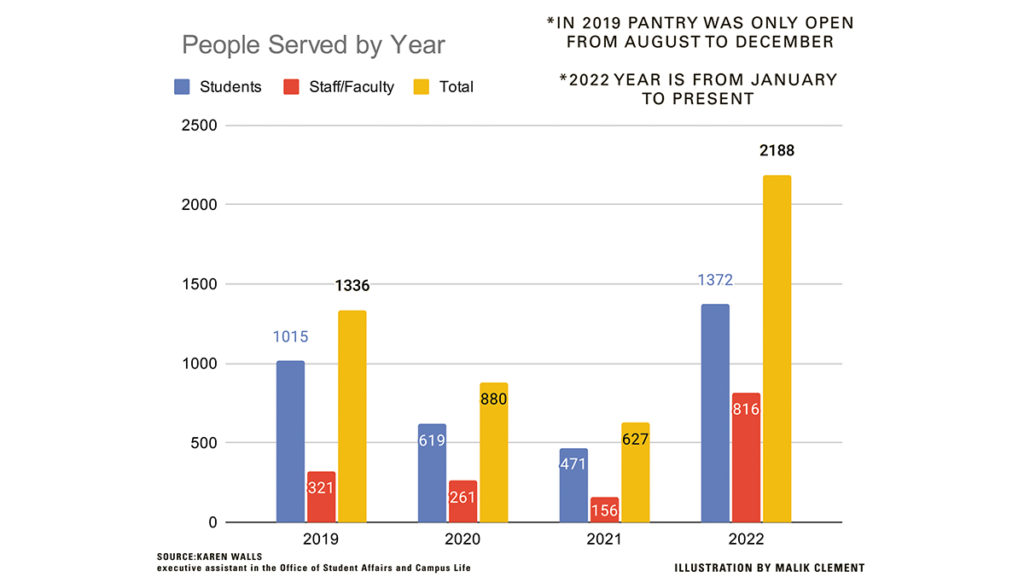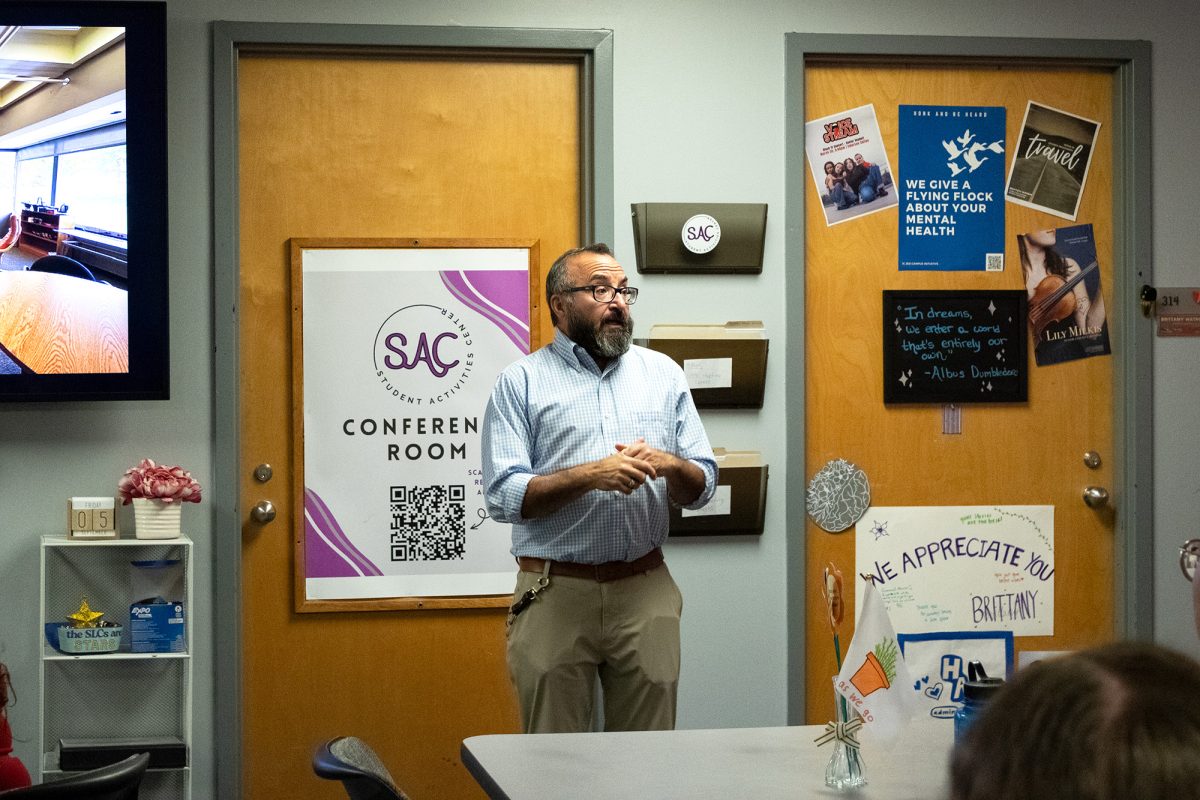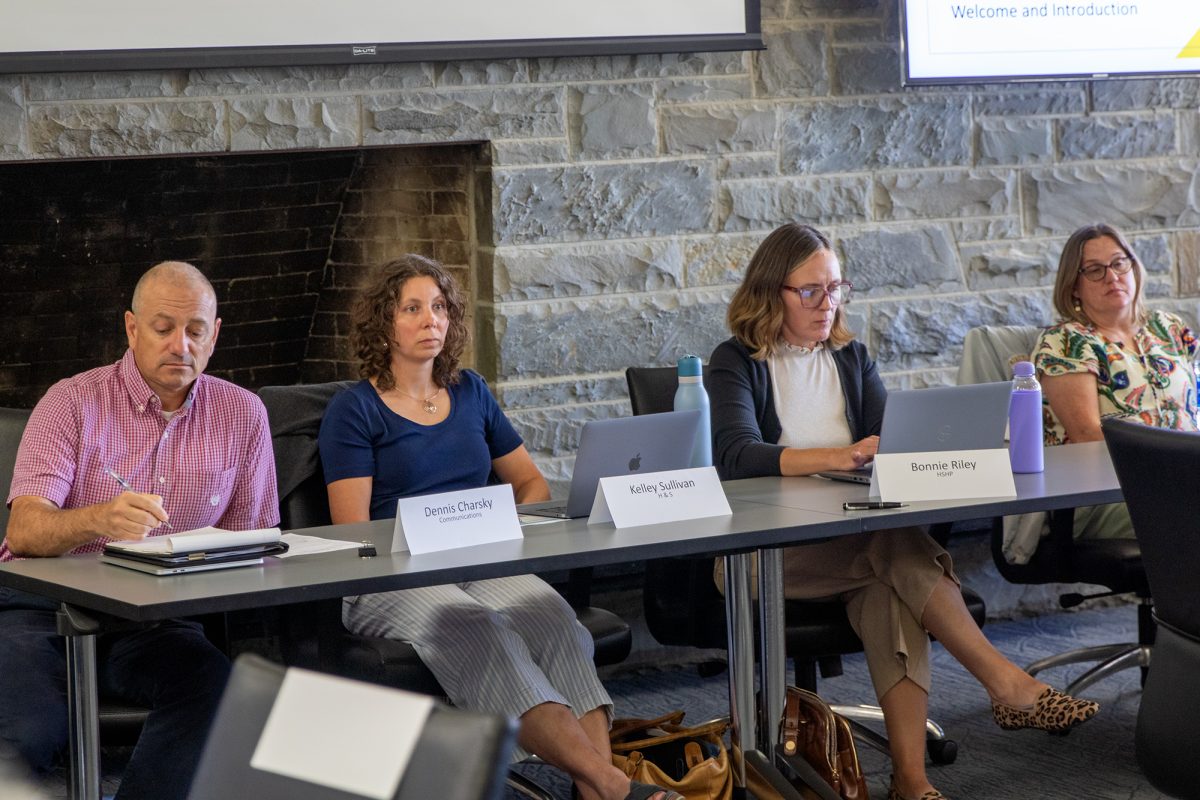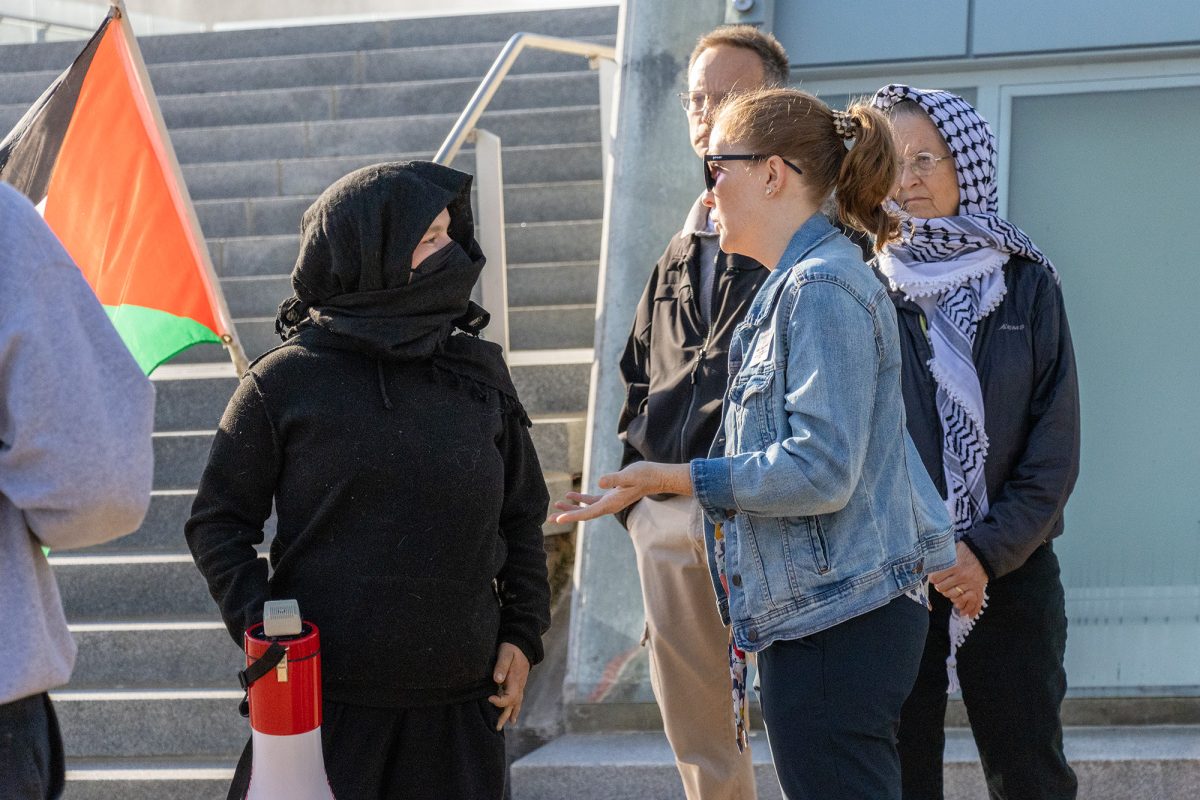For three years of operation, data collected shows that Ithaca College’s Prunty’s Pantry continues to pull in patrons in need of food, but a lack of volunteers reduces its ability to serve the community.
Puntry’s Pantry, created in 2019 with the assistance of the Lissy Family Foundation and named after Dave Prunty, former executive director of auxiliary services, provides food for campus members in need as well as some non-food items like toiletries and health and beauty supplies.
The food pantry’s partnership with the Food Bank of the Southern Tier (FBST) requires it to collect data about the use of the campus pantry and patrons for FBST’s annual report. Each time a patron utilizes the pantry, they are asked to fill out a form that is then collected and compiled to review the impact of the pantry. This data, given to The Ithacan by Karen Walls, executive assistant in the Office of Student Affairs and Campus Life and primary coordinator of the pantry, shows that food insecurity — a lack of consistent access to food for a healthy and active life — remains a prominent issue on campus.
Doreen Hettich-Atkins, executive director of the Office of Student Affairs and Campus Life, said she has seen positive changes in the lives of students because of the pantry.
“One student said to me this summer, ‘I haven’t eaten a real meal in three days,’” Hettich-Atkins said. “I think that without this, many of our students would be struggling much more than they are.”
While the pantry is now open to the public, no Ithaca community members utilize the pantry outside of the college. Walls said there are over 30 off-campus locations for residents of Tompkins County to have access to free food, which might be why the pantry is not being utilized by non-campus members.
According to the Food Bank of the Southern Tier, in 2019, Tompkins County reported 13,980 food insecure residents. By the beginning of 2021, that number lowered to 11,920 residents, according to a report from the Tompkins Food Future organization.
Between 2019 and 2022, there was an increase of over 800 people using the pantry. From January 2022 to September 2022, the pantry has served 1,372 students and 816 staff and faculty members — signifying the highest use of the pantry since its opening in 2019. For the first five months of the pantry’s run — August 2019 to December 2019 — the pantry served 1,015 students and 321 staff and faculty.
Senior Abigail McGuire, who started volunteering at the beginning of Fall 2022, said she is surprised at the turnout of patrons.
“It’s kind of tucked away, so I wondered if it would be inaccessible to students, but it seems like we have a lot of foot traffic coming in and out,” McGuire said.
Despite the decreased number of students still living on or near campus during the COVID-19 lockdown — which started in March 2020 — the pantry remained open twice a week until December 2020. Use of the pantry dropped to a total of 880 patrons served throughout the 2020 calendar year. Students continued to be the main demographic utilizing the pantry and the ratio of students to staff and faculty patrons was two students for every one staff or faculty member. In 2021, the pantry served 627 total campus members. Although classes were still being held virtually, by Spring 2021 many students were on campus.
Walls said that even with the decrease in patrons, she can still recognize the positive impacts the pantry has had on the student body.
“COVID[-19] aside, I’ve seen a gradual increase in the utilization of the food pantry,” Walls said. “I would think there’s been more student retention because of the pantry.”
Hettich-Atkins said more data has been collected through the forms patrons fill out before shopping at the pantry, but it has been challenging to process because of reduced staffing in the Office of Analytics and Institutional Research. Hettich-Atkins said she does not know when the data will be processed because there is still uncompiled data going back to 2019.
Junior Abigail Hoffert, who has been volunteering at the pantry since Spring 2022, said she has realized how many students struggle with food insecurity through her time as a volunteer.
“A lot of the people we get don’t have meal plans because they don’t have the money to pay for it … and might not have access to the grocery store,” Hoffert said.
Despite a clear need amongst the student body for the food pantry, there is a struggle to keep it open due to the lack of student volunteers. The pantry can only open when there are volunteers to help with patrons and inventory. Hettich-Atkins said that occasionally the staff in the Office of Student Affairs and Campus Life fill in, but when staff or students cannot volunteer, the service is unavailable to the public. Currently, there are 34 volunteers for the pantry.
The pantry’s operating hours are currently 12:15 to 2 p.m. Tuesdays and Thursdays and 4 p.m. to 6 p.m. Wednesdays and Fridays. Hoffert said these hours may also be a factor limiting the number of students that are available to volunteer and said she believes that promotion that targets possible volunteers could help. The pantry has information on their Instagram @icfoodpantry and on the college’s website under Student Affairs and Campus Life.
“I feel like the advertising needs to be for student volunteers to sign up, not necessarily just the people that come to the food pantry,” Hoffert said. “I would love to have a staff of volunteers that you know when they’re going to be there. … You can start to build relationships.”
Walls said she thinks that having more honest conversations surrounding food insecurity will increase support for the pantry and the fight against hunger within the college’s community.
“People think that it’s only poor people that use the pantry and that’s not necessarily true,” Walls said. “It’s just an aid: everybody needs aid sometimes, and students need to work on decreasing the stigma of using the food pantry.”









